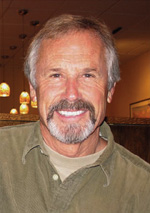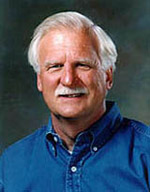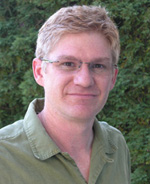Coastal threats that ranged from a rising sea levels to mercury contamination and harmful algal blooms were outlined Tuesday by three UC Santa Cruz scientists during an informational hearing by the Assembly Select Committee on Coastal Protection.
The hearing, designed to collect information for state policy decisions, was the third in a series conducted by the ad hoc committee, which is chaired by Mark Stone (D-Scotts Valley). Although hearings are usually conducted in Sacramento, Stone brought the session to UCSC's Seymour Marine Discovery Center before an audience of about 40 people.
Gary Griggs, director of UCSC's Institute of Marine Sciences, led off testimony with crowd-sourced photos of saltwater filling streets in Mill Valley and the Embarcadero in San Francisco during especially high "king tides" in 2012, saying that a rise in sea level was already impacting coastal infrastructure.
Add an accelerating sea-level rise to extreme weather events like the El-Nino-sparked storms that destroyed coastal homes in Seacliff during 1983 and the potential for damage is multiplied, he said.
Airports, sewage treatment plants, coastal power plants, restaurants, hotels, and homes will all be affected as ocean levels in California climb as much as 40-55 inches by the year 2100, according to Griggs.
Griggs urged communities not to ignore the problem or make shortsighted decisions to simply armor the coast or build more sea walls, but rather to make to make a plan for managed retreat.
"Look at your vulnerabilities, what has been damaged in the past," Griggs said, "project a rise in sea level, assess risk, and develop an adaptation plan."
Mercury contamination "is an old problem with new concerns," testified Russell Flegal, UCSC professor of microbiology and environmental toxicology.
Outlining the discovery of the health effects of mercury-contaminated seafood in Minamata, Japan, in 1956 — a problem that took the Japanese government more than 50 years to address — Flegal noted California not only leads the world in the amount of mercury put into the environment but also in the population of women of childbearing age with mercury in their systems. And, as research becomes more sophisticated, he said, more health effects of mercury are being discovered.
While mercury is a naturally occurring element, California's mining industry has left a legacy of heavy metal pollution that is almost impossible to clean up, Flagel said, and fossil fuel combustion in China adds to the amount of mercury in our environment.
Raphael Kudela, professor of ocean sciences, described how UCSC researchers, along with scientists at the California Department of Fish and Wildlife, discovered that a potent toxin called microcystin produced by freshwater algal blooms had flowed through creeks and rivers into the ocean and poisoned sea otters through their consumption of mussels, clams, and oysters, which concentrate the toxin.
Water sampling near the Santa Cruz Wharf also showed red tides, believed to be harmless to humans, seemed to increase levels of fecal indicator bacteria, Kudela said, noting the case of a woman brought into a Monterey emergency room suffering from double ear infections that had penetrated her brain. Her only risk factor was that she had gone diving during a red tide event.
"Just having red tides seems to drive up pathogenic exposure. There is a direct connection between red tides and beach quality," Kudela said
Other speakers included Monterey Bay Aquarium Research Institute Senior Scientist Francisco Chavez, who spoke on ocean acidification; Monterey Bay National Marine Sanctuary Water Quality Protection Program Director Bridget Hoover, who noted that even though DDT had been banned for more than 50 years it is still found in the Monterey Bay; and Susan Moser, a social science research fellow at the Woods Institute for the Environment at Stanford University, who talked about the urgent need for planning as climate change advances.
"I very much appreciate UCSC and hearing all the different components and the level of expertise that is right here on the Central Coast," Stone said after the hearing. "Translating science into policy isn't always the easiest thing to do, but it's going to be absolutely critical if we want to solve some of these issues."





